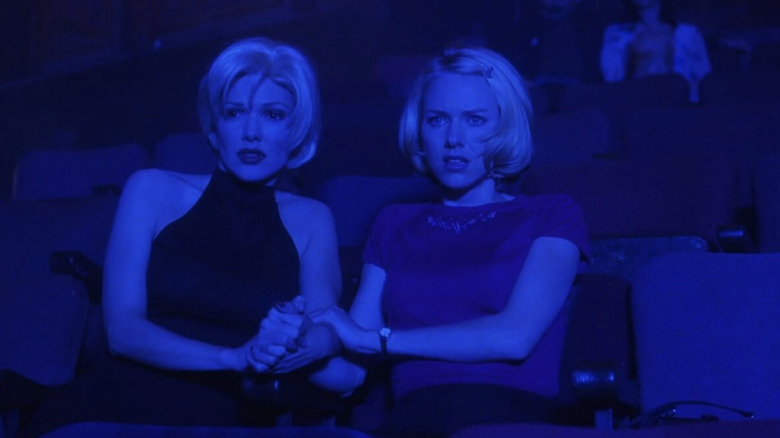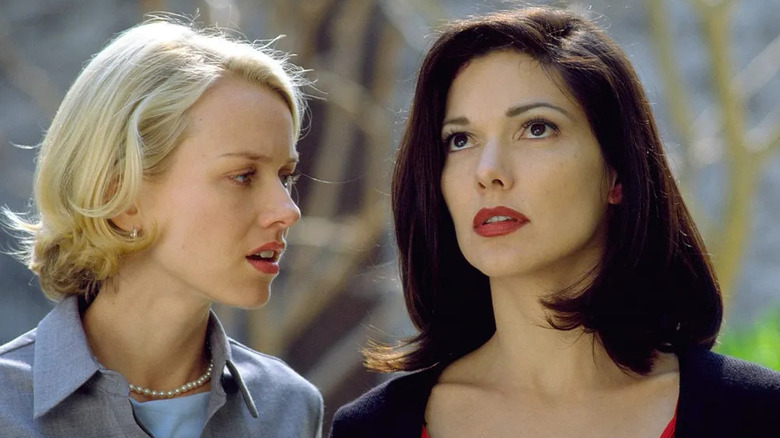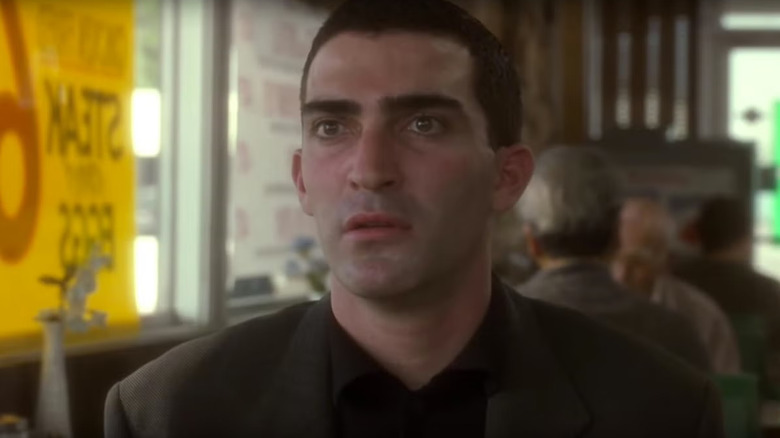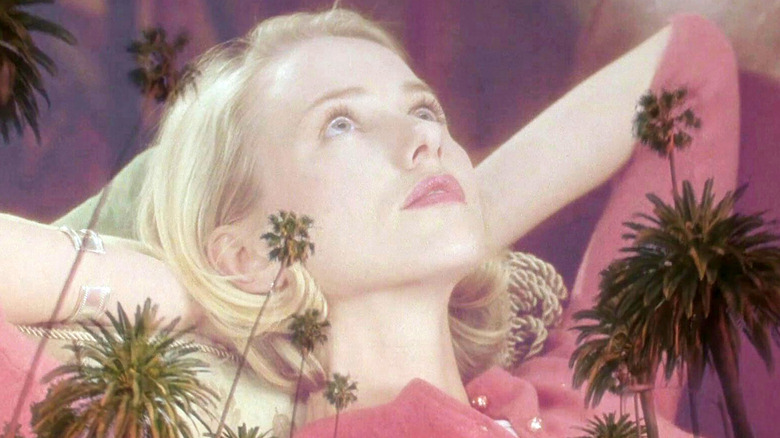If there is one thing that David Lynch’s death on January 16, 2025 was announcedIt’s because the filmmaker and artist had a profound and massive impact on so many people. That’s surprising on paper, given how esoteric and unconventional his work has been throughout his career, not to mention how uncompromising he has been about that fact. A consummate artist, Lynch amazed and thrilled so many in equal measure because he was that rarest of creatures: a quintessentially American surrealist. Americans are somewhat used to European filmmakers using surrealism or symbolism; At least they can easily dismiss foreign directors because they come from a culture and tradition they don’t know or understand. Lynch doesn’t begrudge people the comfort of that reaction, because even a cursory glance at his filmography shows that it is steeped in pure Americana: the wind blowing through Douglas firs, the smell of fresh, hot black coffee and cherry pie in a small town diner and so forth. These images, these elements, are so recognizable to Americans, and yet Lynch enjoyed changing their meaning a little, discovering the menace and menacing, repressed secrets that lurked behind every Hollywood facade and every white picket fence.
One of the most popular memes surrounding Lynch comes from an interview he gave with David Lean at BAFTAin which he called “Eraserhead” his “most spiritual film.” When Lean asked Lynch to elaborate, Lynch flatly refused. This meme succinctly summarizes Lynch’s usual approach to discussing, let alone decoding, his work, with the filmmaker determined to let audiences interpret his films in their own way. Although this is not a new or unusual path for a director, Brady Corbet is currently avoiding any questions of interpretation on his press tour “The Brutalist” For example, Lynch’s ethos is characterized both by how wildly interpretive his work is and by his steadfast adherence throughout his career to never budge on that front.
Never, except in a few rare cases. The more one delves into the supplementary materials that Lynch has officially approved for publication, the more one can find (somewhat) more comprehensive clues to his mysterious process and creative thinking. Material such as his books (particularly “Room to Dream”) and behind-the-scenes footage (particularly those released on home media “Inland Empire” and “Twin Peaks: The Return”) shed some light on the mystery surrounding Lynch. However, the most important key to deciphering Lynch came via a flyer that he personally wrote and which was supposed to be attached to “Mulholland Dr.” DVD, a document that, whether on the level or not, is a good starting point when it comes to exploring his work.
Why Lynch Mulholland Dr. chose as a place to begin decryption
When confronted with this document, the first question that naturally arises is why Lynch is suddenly revealing clues to the decoding of one of his films and why “Mulholland Dr.” in particular. Finally, This clip is currently making the rounds at the 74th Academy Awardsin which Roger Ebert spots Lynch in the press line and asks him a direct question about how many characters Naomi Watts plays in “Mulholland Dr.”, Lynch is seen refusing to answer Ebert’s question with a “How are you, Roger?” to answer. “And then There’s this other clipin which Lynch eloquently summarizes his love of cinema as an art form and why he believes numerous, individual interpretations of his films are far more valuable than his own.
A simple answer to why Lynch wrote the flyer that accompanies Mulholland Dr. The DVD (titled “Mulholland Drive: David Lynch’s 10 Clues to Unlocking This Thriller”) reveals that Lynch’s career was at a low point when “Mulholland Dr.” was made. The film originally began as a TV pilot for Touchstone Television and ABC, after which Lynch wanted to return to the big screen his success with “Twin Peaks.” After the phenomenon surrounding this series subsided, Lynch experienced several financial and critical failures, with the now popular films Twin Peaks: Fire Walk With Me and Lost Highway failing and a sitcom called On the Air barely making it and even his acclaimed film The Straight Story, which proved he could break into the world of all-ages films, failed to make its budget at the box office.
After Mulholland Dr. was rejected by ABC, Lynch agreed to Hail Mary and decided to write and shoot additional material to turn the pilot into its own (at least in some ways) cohesive feature. Fortunately, the feature version of “Mulholland Dr.” The film received great acclaim when it premiered at Cannes in 2001, and the good vibes around it lasted long enough to make it a profit when it was released by Universal Pictures that same year brought in. So Lynch was understandably doubly cautious about his work and its reception, which could have led to this DVD flyer and its notices.
However, Lynch appeared to exert a great deal of creative control over the release of Mulholland Dr., even sending screening instructions to all theaters showing the film and insisting that the DVD release not have chapter stops included on the disc, which meant the film had to be watched in one sitting. In this way, the clue document is not a function of Lynch responding to public demand, but rather is another piece of the puzzle of the film and his work that he expressly intended.
David Lynch’s tips for developing his work
For those of you who haven’t read Mulholland Dr., if you use the Clues document, you might think that these Clues are pretty clear clues to the larger meaning of the film’s multi-layered narrative. Not so fast, as you can see:
- “Especially at the beginning of the film, make sure that at least two clues are revealed before the credits roll.
- Note the appearance of the red lampshade.
- Can you hear the title of the movie Adam Kesher is auditioning actresses for? Will it be mentioned again?
- An accident is a terrible event – pay attention to the scene of the accident.
- Who gives a key and why?
- Note the bathrobe, ashtray and coffee cup.
- What is felt, realized and collected in Club Silencio?
- Did talent alone help Camilla?
- Note the events surrounding the man behind Winkie’s.
- Where’s Aunt Ruth?”
These clues are presented in Lynch’s inimitable style; They are simultaneously utterly simple and astonishingly beguiling. They are also very straightforward, the questions are phrased like a public school quiz. The clues feel less like a Cliff’s Notes guide to the film and more like an extension of it, as lines like “Notice the appearance of the red lampshade” feel like the cowboy (Monty Montgomery) telling Adam (Justin Theroux), what will happen if he does “good” or “bad”. There is an undeniable tension between the images, dialogue and scenes Lynch presents and their elusive meanings, as even the biggest Lynch hater can sense that there is a logic and intent at work in Lynch’s films. In other words, these things all mean something and aren’t just random weirdness for the sake of weirdness.
There has been a lot of debate on message boards and other online forums about these clues and their actual answers, with many people frustrated because – big surprise – they had different opinions about what the answers were and what they all added up to. The early ’00s were a golden age of sorts, with filmmakers using their ability to discuss and package their films on physical media to amplify and expand the film’s impact. Witness Christopher Nolan recording multiple ends of his commentary track for “Memento.” This ensures that no casual listener will receive the same “definitive” explanation for the events of this film. These clues are Lynch’s version of that idea for “Mulholland Dr.” – more questions disguised as answers.
Lynch insists on giving us space to dream
Ultimately, the clue document was a great gift for fans of David Lynch and his work. It just wasn’t the gift it necessarily claimed to be, because while these clues may or may not decipher “Mulholland Dr.”, they certainly invite further thought and questions from the audience, and that’s the whole point. Yes, some of these people believe that ambiguity is a kind of flaw, or at least a source of frustration. But at the risk of humiliating them, these people simply do not understand the appeal and power of mystery. Maybe they honestly lack imagination and that’s their problem. not the artist’s and not ours. Luckily for you, there is a wide variety of art and entertainment available, and certainly there are films and television shows that require only a golf ball-sized consciousness to understand.
In the meantime, for those of us who are adventurous and resourceful enough: the work of David Lynch will continue to provide an endless source of thoughts, desires and confusion. fearand above all, pleasure. Lynch was one of those artists who inherently understood that art is not a finite thing, that despite its completion and integration into a particular canvas, a particular period of time, or something else ephemeral, it can also be endless. Lynch’s dreams have given me my own dreams, just as they have given countless others theirs. His transcendentalist practices and philosophies found their way into his work, so much so that he managed to go beyond the normal effect that cinema can have, which is that almost any film can seem new upon repeated viewing. Not only can you discover new elements in Lynch’s films, but they also have the power to explore new depths in your own soul and give you new clues to questions you may have never asked before.
In other words, David Lynch’s art is a living, breathing entity unto itself, and its availability and accessibility will ensure that it continues to be immortal. David has sadly passed from this world, but for so many of us – through his work and in our hearts – he will never die.
“Who gives a key and why?” He gave it to us so that we can achieve new dreams forever.









